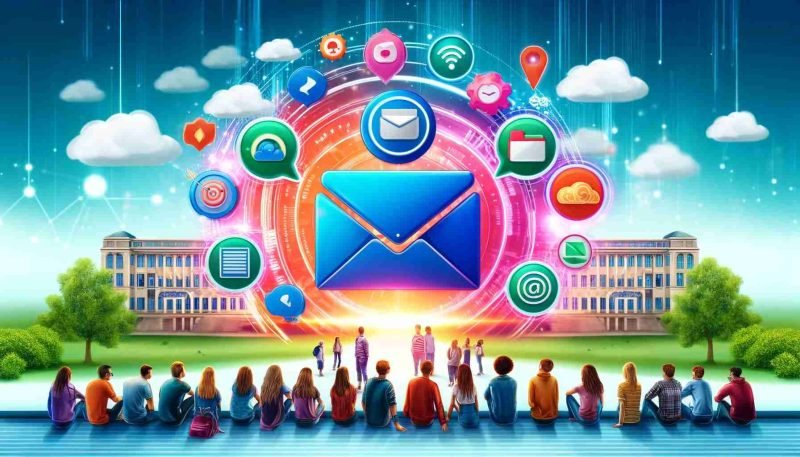In the digital age, academic success is often supported by a robust framework of technological tools, and at the Cape Peninsula University of Technology (CPUT), the integration of CPUT Student Email with other academic resources is pivotal. This system not only streamlines communication but also enhances the learning experience by creating a cohesive educational ecosystem. This article explores the benefits, methods, and best practices for integrating CPUT Student Email with other essential academic tools, ensuring students maximize their educational potential.
The Central Role of CPUT Student Email
CPUT Student Email serves as more than just a platform for sending and receiving emails; it is the gateway to a comprehensive suite of academic resources. As the primary means of official communication between faculty and students, it ensures that all academic notifications, from assignment deadlines to campus events, are communicated efficiently. The importance of regularly checking and managing one’s CPUT Student Email cannot be overstated in the context of academic success and resource utilization.
Seamless Integration with Learning Management Systems (LMS)
One of the most critical integrations of CPUT Student Email is with the university’s Learning Management System (LMS), such as Blackboard or Moodle. This integration enables students to receive real-time notifications about new content, forum posts, grades, and feedback directly to their email. By linking CPUT Student Email with the LMS, students can ensure they never miss important updates and can manage their study schedules more effectively.
To set up this integration, students typically need to activate email notifications within their LMS settings. This process involves confirming their CPUT Student Email as the primary contact email and selecting the types of notifications they wish to receive. This linkage not only simplifies communication but also helps in building a routine where students regularly check both their email and LMS for updates, keeping them informed and engaged with their courses.
Enhancing Collaboration with Cloud-Based Services
Collaboration is a cornerstone of modern education, and CPUT Student Email is integrally linked with various cloud-based services like Google Drive, OneDrive, and Dropbox. These platforms facilitate seamless sharing of documents, spreadsheets, and presentations, allowing for real-time collaboration and feedback. By integrating CPUT Student Email with these services, students can receive alerts when changes are made to shared documents or when new files are shared with them, enhancing teamwork and project management efficiency.
To utilize these features, students should use their CPUT Student Email accounts to register or sign in to these cloud services. This not only ensures a unified academic identity but also increases security, as all related academic communications and collaborations are tied to their official university email account.
Synchronization with Calendar and Scheduling Tools
Effective time management is essential for academic success, and integrating CPUT Student Email with calendar applications is a strategic move. Tools like Google Calendar or Microsoft Outlook can be synchronized with CPUT Student Email, allowing students to automatically receive reminders about assignment due dates, exam schedules, and class times. This integration helps students to organize their academic commitments efficiently, reducing the stress of manually tracking important dates.
Setting up this synchronization usually involves adding the CPUT Student Email account to the chosen calendar application and enabling the sync options for calendars and reminders. This ensures that any academic deadlines or events added by professors through the LMS or other platforms are automatically reflected in the student’s personal calendar.
Streamlining Communication with Faculty and Peers
CPUT Student Email is essential for direct communication with faculty and peers. When integrated properly with other communication tools like Microsoft Teams or Slack, which are often used for group projects or communication with class cohorts, CPUT Student Email can enhance clarity and streamline processes. This integration ensures that all members of a group can communicate effectively, sharing insights and updates not only through direct messaging but also through organized email threads.
To optimize communication, students should encourage their peers and faculty to use group email lists or distribution groups created through CPUT Student Email. This approach ensures that everyone receives the same information simultaneously, reducing the chances of miscommunication or information gaps.
Best Practices for Maximizing the Use of CPUT Student Email
To fully benefit from the integration of CPUT Student Email with other academic tools, students should adhere to several best practices:
- Regularly Update and Backup Email Data: Ensuring that email settings are updated and that important emails are backed up can prevent loss of crucial academic information.
- Organize Email Efficiently: Utilizing folders, tags, and filters can help students keep their academic emails organized, making it easier to retrieve important emails when needed.
- Stay Informed on Privacy and Security Measures: Being aware of the latest security measures and best practices can help protect sensitive academic information.
Conclusion
The integration of CPUT Student Email with other academic tools not only simplifies the management of educational resources but also significantly enhances the academic experience by fostering better communication, collaboration, and time management. As CPUT continues to evolve its digital infrastructure, the central role of CPUT Student Email remains clear—it is an indispensable tool for academic success in the modern world.
Read Dive is a leading technology blog focusing on different domains like Blockchain, AI, Chatbot, Fintech, Health Tech, Software Development and Testing. For guest blogging, please feel free to contact at readdive@gmail.com.





